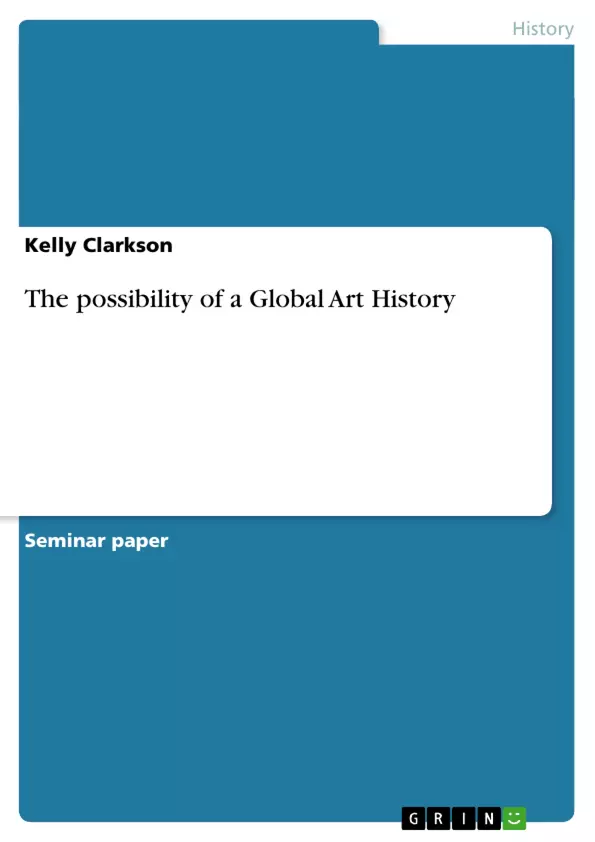Contemporary art is now judged as a historical experience commencing from the end of world war II, in 1945. The current crop of artists is contributing their mite to the highly multifaceted and globalized economy of cultural packages. The year 1945 was turning point, because after the war, and the establishment of American superiority, the cultural political and economic power shifted partially from Europe to the US. It was not surprising because the erstwhile European colonialism also waned considerably. A new generation of artists has evolved around this time, who consistently overturned the existing modernist practices and established new tools for dealing with contemporary art in Europe and North America, leading to what Guy Debord described as “society of the spectacle”, which gives prominence to the visual arts, which in turn dictate the various cultural practices, and in general, specify the way people interpret, contest or maneuver contemporary life (Amelia, J., 2006).
Assuming that, post world war II, contemporary arts is now 60 years old, it is indeed a surprise that so much of history has come to pass with such speed and density of events during this short period in world history. This has necessitated the need for developing the capabilities of understanding and appreciating the visual arts since 1945. These facts serve as a vital addition to the existing texts on social, aesthetic and chronological development of contemporary art. Most of these surveys concentrated on the Euro-American art since 1945, with just a little attention to non-European American art developments and history (Amelia, J., 2006).
As art continues to bargain on its affiliation to globalization it wonders what consequences globalization will have on it. We also wonder whether art history could go global, and if so, what it will look like and who would be running the show. This subject will need to cover every aspect of space, travel, national identity and intra-cultural impacts of the day (Amelia, J., 2006).
Inhaltsverzeichnis (Table of Contents)
- Introduction
- Is A Global Art History Possible?
- Globalization of Art History
- An In-Depth Study of Globalization
- The Internet's Impact on Art and Criticism
- The Challenge of a Global Art History Institution
- The Case of Japan and India
- Beyond Western Art History
Zielsetzung und Themenschwerpunkte (Objectives and Key Themes)
This text explores the possibility and challenges of developing a global art history. It examines the implications of globalization on the production, distribution, and understanding of art, particularly in the context of the dominance of Western art history and institutions. The text also investigates the potential for non-Western art histories to gain recognition and influence.
- The impact of globalization on art history and its institutions
- The challenges of developing a global art history that is not dominated by Western perspectives
- The role of non-Western art histories in shaping a global understanding of art
- The potential for art history to become more inclusive and representative of diverse cultures
- The influence of institutions, technology, and critical discourse on the formation of art history
Zusammenfassung der Kapitel (Chapter Summaries)
- Introduction: This introductory chapter sets the stage for the discussion of a global art history by examining the historical context of contemporary art, particularly the rise of the “society of the spectacle” and the emergence of new artistic practices after World War II.
- Is A Global Art History Possible?: This chapter explores the question of whether a global art history is feasible and outlines the challenges involved in achieving such a goal. It emphasizes the need to consider global perspectives, transcend geographical boundaries, and address the power dynamics between the center and the periphery.
- Globalization of Art History: This chapter examines the intricate processes and challenges of globalizing art history, highlighting the need for meticulous control and analysis. It emphasizes the need to address institutional problems, analyze geographical boundaries and space-time frameworks, and critically engage with the political power relationships between the center and the periphery.
- An In-Depth Study of Globalization: This chapter delves into the nature and influence of globalization on modern culture, analyzing its impact on the production and distribution of art. It explores the rise of diverse theories and critiques of globalization and its role in shaping the contemporary art world.
- The Internet's Impact on Art and Criticism: This chapter examines the role of the internet in shaping the dissemination, distribution, and critique of art in a globalized world. It analyzes the impact of the internet on the proliferation of critical writing, the emergence of multiple publics, and the changing nature of art criticism.
- The Challenge of a Global Art History Institution: This chapter focuses on the challenges posed by existing institutions, particularly the International Association for Art History (CIHA), in the pursuit of a truly global art history. It criticizes the institution's focus on Western art history and its exclusion of non-Western perspectives.
- The Case of Japan and India: This chapter examines specific examples of how non-Western art histories have been marginalized or misrepresented within the dominant Western framework. It analyzes the experiences of Japan and India in their efforts to gain recognition for their unique artistic traditions.
- Beyond Western Art History: This chapter poses crucial questions about the limitations of Western art history and the need to move beyond its boundaries. It explores the debate surrounding the inclusion of non-Western perspectives and challenges the assumption that Western concepts can adequately encompass the diverse artistic expressions of a global world.
Schlüsselwörter (Keywords)
The main keywords and focus topics of this text include: global art history, globalization, Western art history, non-Western art histories, institutional challenges, power dynamics, center and periphery, cultural production and distribution, internet and art criticism, diverse perspectives, inclusive representation.
- Quote paper
- Dr Kelly Clarkson (Author), 2012, The possibility of a Global Art History, Munich, GRIN Verlag, https://www.grin.com/document/213219



